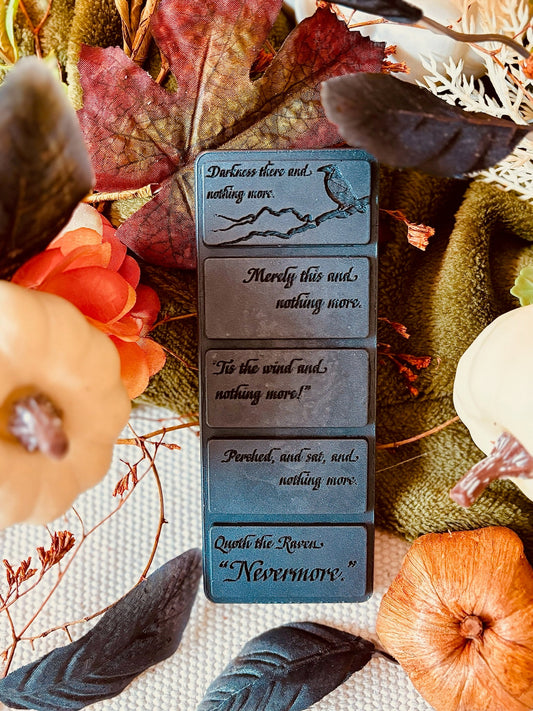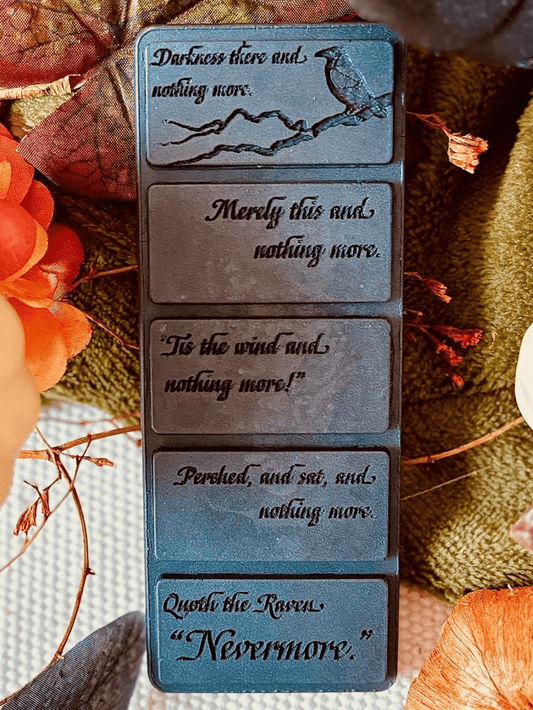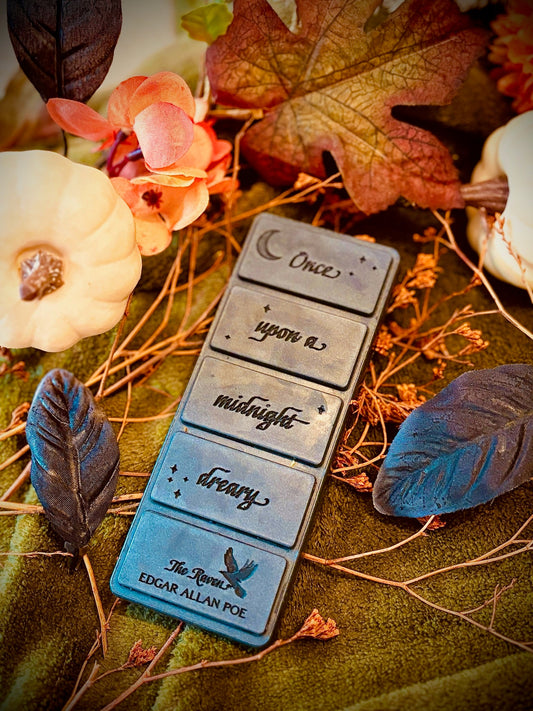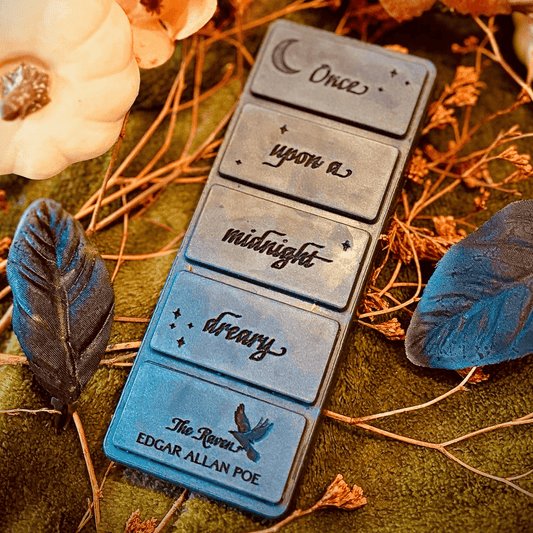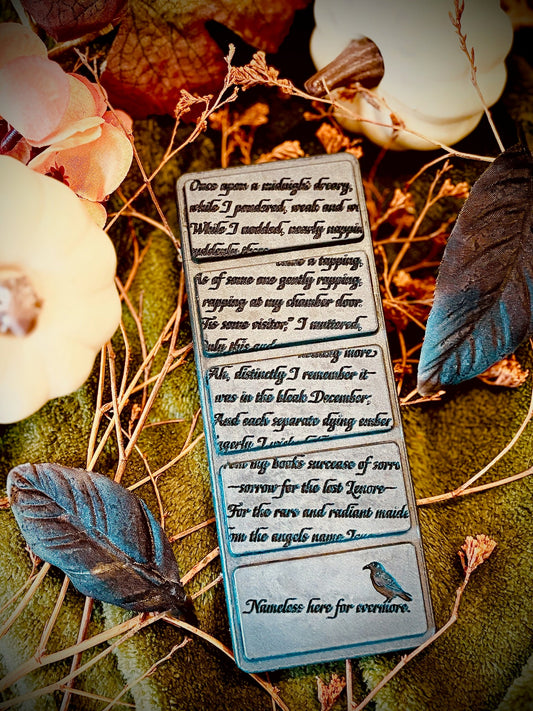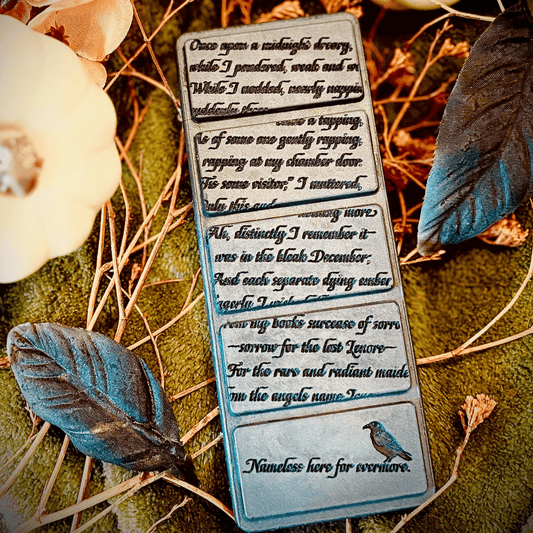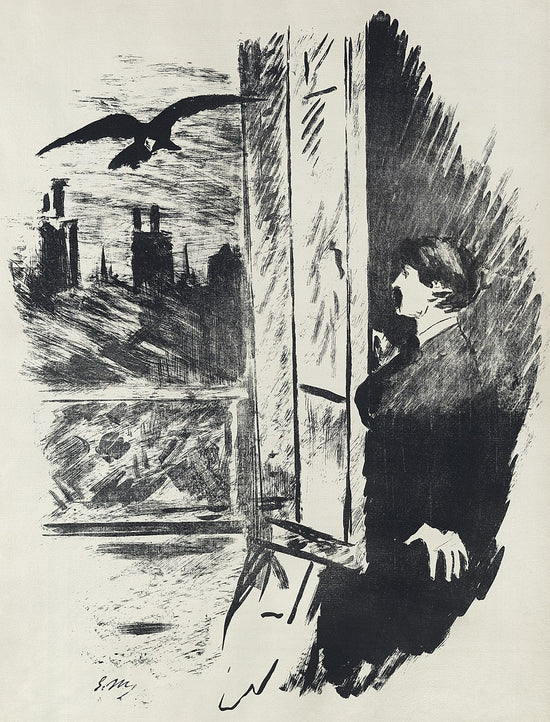
Indulge in the mysterious world of Edgar Allan Poe with our collection of bookish wax melt bars, each adorned with iconic quotes from his haunting poem, The Raven. These beautifully crafted wax melts are the perfect bookish gift for any lover of literature, offering a unique way to bring the dark, atmospheric charm of Poe’s work into your home. Whether you're seeking the perfect gifts for book lovers or simply want to enhance your space with literary flair, these bookish wax melts are sure to delight.
Each wax melt features famous lines from The Raven, such as “Nevermore” and “Once upon a midnight dreary,” allowing you to immerse yourself in Poe’s eerie world while enjoying a soothing, aromatic experience. The rich scents of our bookish wax melts will evoke the eerie and captivating atmosphere of the poem, perfect for those long reading sessions or cosy nights in.
Not only are these wax melts ideal for personal use, but they also make a thoughtful and unique bookish gift for the literary lover in your life. Whether you’re gifting them to celebrate a love of Edgar Allan Poe or simply to surprise someone who appreciates literary quotes, these gifts for book lovers are a perfect fit.
Let the essence of Poe’s The Raven fill your home with enchantment and mystery, and enjoy a sensory experience unlike any other. These bookish wax melts are a must-have for anyone who loves both the written word and beautiful, fragrant home decor.
